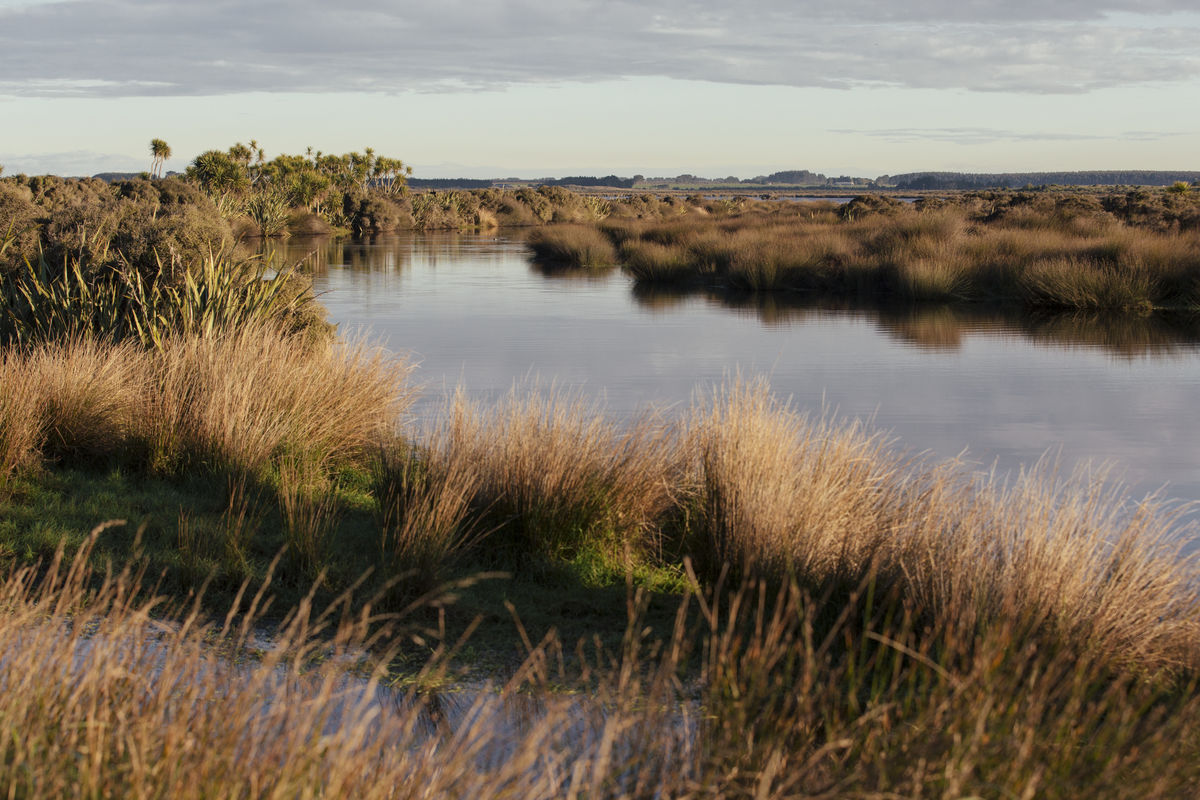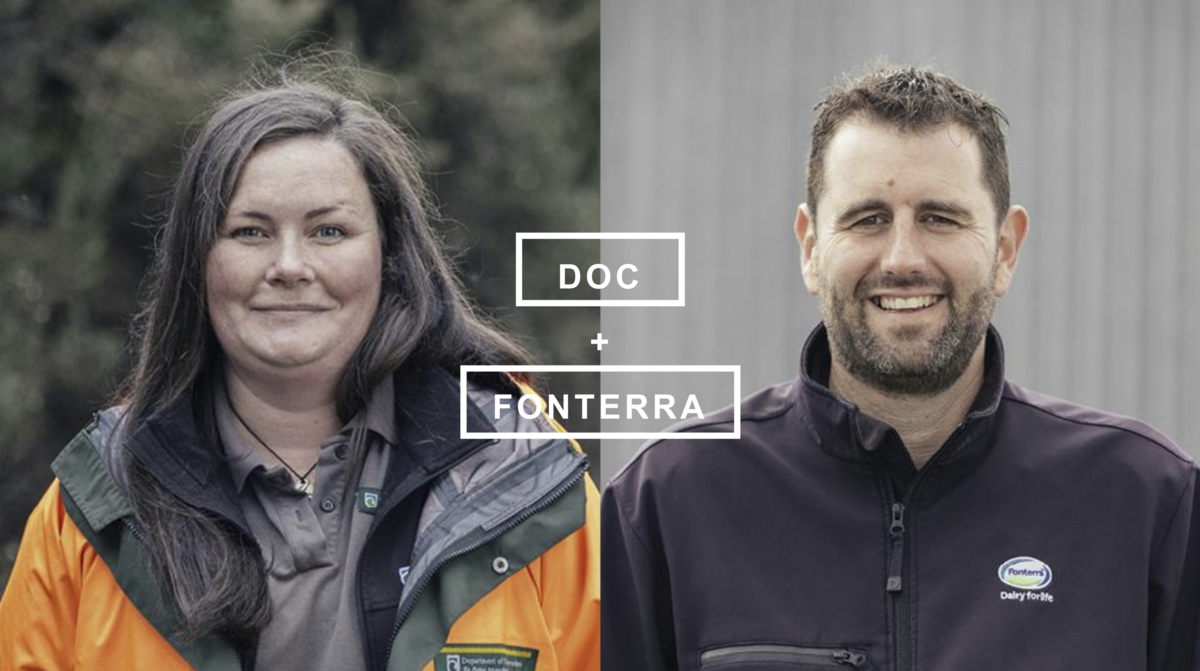
The Power of Partnerships
Can strategic partnerships really make a difference to freshwater and farming?
That’s a central question to the work of Living Water says National Manager, Sarah Yarrow. “As the 10-year partnership between the Department of Conservation and Fonterra is in its final year, we’ve been asking, can collaboration lead to freshwater and farming thriving together?”
As a partnership dedicated to improving freshwater in significant dairying catchments our answer at Living Water is a resounding “yes.” The scale of the issues doesn’t fit neatly within farm boundaries or on conservation land, or even solely within the dairying sector.
Living Water has provided an opportunity to forge new partnerships with farmers, scientists, councils, mana whenua and local communities to make a real difference for freshwater in New Zealand.
“Successful change requires landowners and stakeholder in a catchment working together with iwi, councils and government because no one organisation or entity has all the answers or resources”, says Yarrow. “Our projects have shown that catchment-level approaches are more likely to produce better outcomes in the long-term than a farm-by-farm approach. Working together has other benefits. The costs of remedial activities can be shared rather than falling to one landowner, and groups with a catchment plan can access funding, which can make an enormous difference.” Says Yarrow.
The Living Water partnership itself has accelerated freshwater improvement, but it’s our work with others that has really made lasting impacts, that will continue after the Living Water partnership comes to an end mid-2023.
The complexities that come with freshwater ecosystem improvement meant we needed to partner strategically with those at place and nationally. Including the Living Water partnership here’s a selection of some of the partnerships Living Water has been involved in.
1. Living Water Partnership
Who: Department of Conservation and Fonterra
What: a 10-year partnership between Fonterra and the Department of Conservation, 2013-2023. Trialling tools and solutions to enable farming, freshwater and healthy ecosystems to thrive side-by-side.
Why: Fonterra was focused on water quality due to public concerns, but this was just one part of the lowland ecosystem and biodiversity crisis that DOC was focused on.
Together, Fonterra and DOC are stewards of approximately 40% of New Zealand’s land, by joining forces it would be a big win for NZ and we could make more of an impact working together for freshwater and biodiversity than we could individually.
We have an executive governance group, a co-designed work programme, and our teams work side-by-side on the ground delivering projects and research and development trials.
How the partnership has accelerated change:
- Formed partnerships with 52 groups and organisations around the country
- Carried out 70 projects, including trials of 40 different types of tools and approaches. This included on-farm tools for nutrient and sediment management, such as in-stream sediment traps, floating wetlands and Fine Particle Fertiliser Application; projects that increase biodiversity while maintaining drainage like the Waituna Creek transformation project and Powells Road waterway enhancement, through to catchment scale tools like Physiographics and Re-imagining an entire catchment waterway network in the Ararira/LII catchment.
- 9 solutions being used by other organisations
- A range of projects aimed at bringing people together and making decisions collectively have been trialled. Like the innovative Mana Enhancing Agreement, Incubate, how to establish a trust.
More information: Living Water – How to establish a partnership; Partnership planning key to successful collaboration over water quality
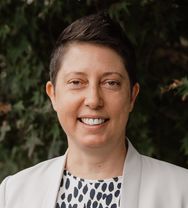
Sarah Yarrow
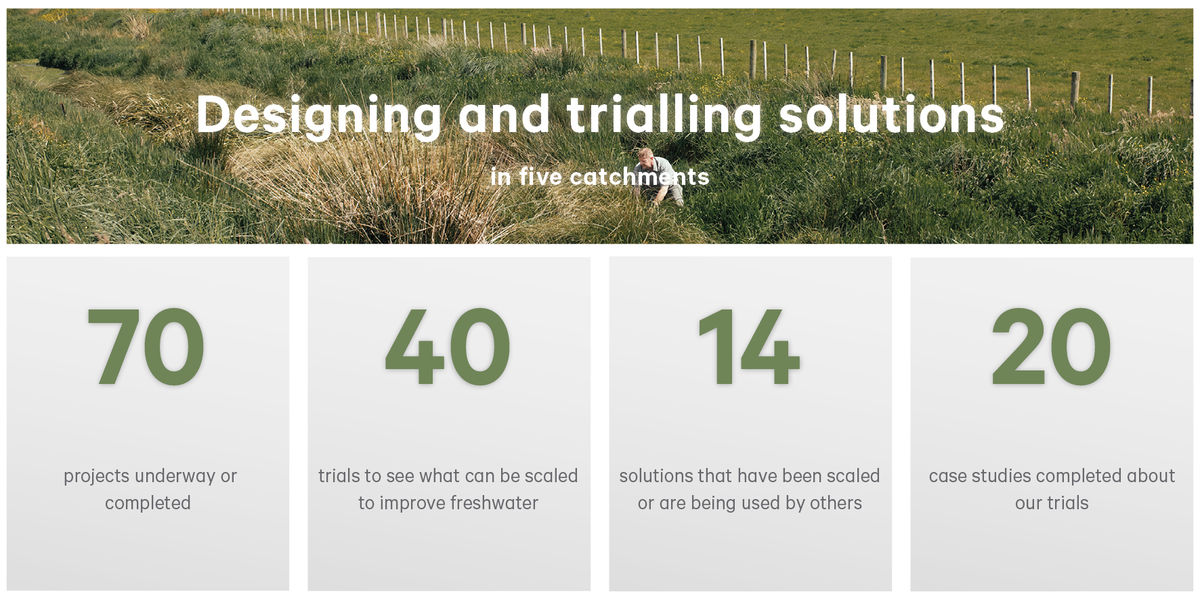
2. Farming with Native Biodiversity – A Living Water National partnership
Who: led by the NZ Landcare Trust and supported by Silver Fern Farms, the Living Water Partnership (Fonterra and the Department of Conservation), the BioHeritage National Science Challenge and the Ministry for Primary Industries’ Sustainable Food and Fibre Futures fund.
What: a 20-month pilot project with the goal of developing resources and capability that will create a change for native biodiversity within farm systems.
Why: 50% of Aotearoa New Zealand is pastoral land and pastoral land contains 25% of all remaining native vegetation which we know is in decline. Healthy ecosystems with high biodiversity are essential for sustainable farming. Science and experience have found wins for native biodiversity can also mean wins for farm production.
This project aims to make it much easier for farmers to integrate existing native biodiversity into their farming systems and protect and enhance what biodiversity already exists on their land.
How the partnership has accelerated change:
Independent ecologists are working with farmers, farm advisors, regional councils, action groups and industry to provide neutral, trusted native biodiversity knowledge in a farming relevant manner.
- Creating learning modules to be integrated into farm advisors ongoing training and help highly engaged farmers gain knowledge about managing native biodiversity on farm, from anywhere.
- Created how to guides, podcasts and other resources to be used by landowners, farm advisors and catchment groups
- Designing in-person training sessions that can be used at catchment group meetings or events attended by landowners and advisors
All resources can be found on the Farming with Native Biodiversity website
3. Waima Waitai Waiora partnership, Northland
Who: Northland Regional Council, Living Water, Reconnecting Northland, Manaaki Whenua / Landcare Research, Sustainable Business Network, Integrated Kaipara Harbour Management Group, Ngā Kaitiaki O Ngā Wai Māori, Te Roroa, Te Uri O Hau, Million Metres Streams
What: Working with landowners to develop farm environment and water quality improvement plans for 230 farms, incorporating sustainable land management practices and the principles of Mātauranga Māori. The goal is to reduce sediment entering the Kaipara Harbour.
Why: The Kaipara is the largest harbour in the Southern Hemisphere and is a national taonga for its many ecological, cultural, historic and economic values. The mauri of the harbour, its ecological health and wellbeing is being degraded by sediment from the Wairoa River network.
How the partnership has accelerated change:
A collaborative effort agreed by partners in 2017 to enhance the impact, reach and effectiveness of water quality improvement initiatives across the Northern Wairoa through sharing perspectives, experience, resources, knowledge, and networks to ensure all our respective work programmes are aligned
A Mana Enhancing Agreement used by the partnership places the principle of mana at the centre of a living relationship to manage the expectations, roles and responsibilities of the partners working together on this project. The partnership has:
- Worked alongside mana whenua and landowners to incorporate mātauranga Māori (indigenous knowledge) practices, alongside good farming and forestry principles, plus land restoration practices.
- Developed farm environment plans with landowners to identify, prioritise, and adopt sustainable land management practices on their farms.
- Provided subsidies to landowners to assist with fencing, planting, stock water reticulation and wetland enhancement.
- Established freshwater quality monitoring sites in the catchment.
- Established a new hapū coordinator role at Northland Regional Council.
- Helped to carry out Te Kawa Wairoa research project, an iwi and hapū-inspired research project concerning the health, wellbeing, and mauri of the Wairoa River and its tributaries.
- Secured funding of $2.8m for the five-year project, including $1.25m from the government’s Freshwater Improvement Fund and $1.25m from project partners
Find out more at the Waima Waitai Waiora website
Waima Waitai Waiora
Waimā̄, Waitai, Waiora - partnering to restore the mauri of the Wairoa River
4. A Community-led, Mountains to Sea approach, Pūkorokoro Miranda
Who: Living Water and the Western Firth Catchment Group Trust
What: Developing and testing processes, tools and activities designed to motivate engagement in catchment-wide restoration and reconnection activities and accelerate environmental improvement.
Why: The Western Firth Catchment Group Trust was established when landowners were concerned that the approach led by the Waikato Regional Council would not provide the opportunity for the landowners to lead engagement on water quality improvement. A group of concerned landowners met and decided that more could be achieved from the grassroots.
How the partnership has accelerated change:
Activities completed by the Western Firth Catchment Group Trust (WFCGT) with the support of Living Water have led to enhancement of the Pūkorokoro Miranda Streams, the estuarine environment, and the RAMSAR wetland at the bottom of the catchment.
- Undertaken a catchment condition survey that looked at potential risk areas like stock access to waterways, fish barriers and erosion. Then tasks are prioritised. The graphic representation of this tool makes it easier for landowners to see how their land fits into the wider catchment and a great visual aid when applying for funding.
- A specific version of the Farm Environment Plan app was developed to include prioritised actions from the catchment survey
- On-going water quality testing being carried out by Eco-Quest
- Riparian planting has been extensive and ongoing, areas to be planted are highlighted and pooled together on Farm Environment plans
- Poplar planting on the steep parts of the catchment have reduced sediment
- Increasing biodiversity through fencing, land retirement and riparian planting and improved predator control
Read more: Western Firth Catchment Group website
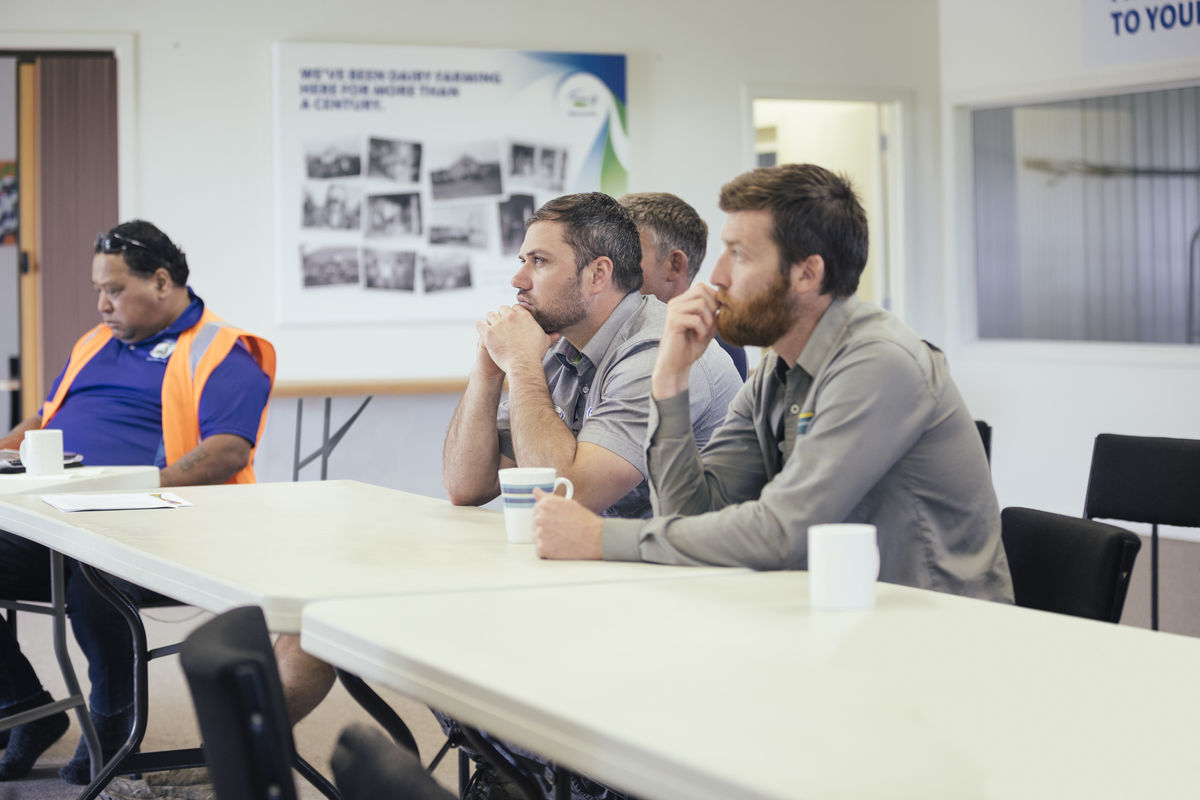
5. Manga-o-tama Ōhaupō Peat Lakes to Waipā River Connection project
Who: Nga Iwi Tōpū O Waipā - Ngāti Apakura, Ngāti Hikairo, Ngāti Mahanga, local farmers and stakeholders including Waipā District Council, Waikato Regional Council, NZ Landcare Trust and the Manga-o-tama Stream and Wetland Restoration Trust
What: a catchment-wide approach to improve water quality and restore habitat for native biodiversity along the Manga-o-tama stream
Why: The Manga-o-tama stream flows through productive land and is an important migration route for native fish species such as short-finned and long-finned tuna/eels. Other native fish recorded in the Manga-o-tama stream include banded kōkopu, black mudfish, common bully, cran’s bully, koura, smelt and torrent fish. Several rare species have been recorded in the catchment including pūweto/spotless crake and Pekapeka-tou-roa/long tailed bat, one of only two remaining species of native land mammals in New Zealand.
How the partnership has accelerated change:
- 2021: Mana Enhancing Agreement Signed; $388,000 of funding secured for a two-year work programme from the Waikato River Authority
- 92% of Fonterra farms in the catchment have Farm Environment Plans that integrate biodiversity and freshwater
- Cultural values, wellbeing and heritage values are being assessed, the focus is on managing pest fish and improving tuna habitat and migration pathways.
- 10, 543 plants planted in prioritised areas
- Two Adroit real time monitoring sensors installed to provide real-time water quality data
- Maintaining 30 hectares of planted areas, bringing willow, privet and other weeds under control
- Retiring farmland and installing 8km of fencing to protect wetlands and riparian margins
- Planting newly fenced areas with 16,000 plants, creating a buffer of riparian vegetation between farmland and wetland to assist in filtering nutrients, sediment, and pathogens from farm runoff and creating a corridor for endemic fauna
- Identified key sources of sediment/ nutrients/ pathogens and where appropriate, install carefully targeted mitigations to help improve water quality throughout the catchment, such as sediment traps and detention bunds.
- Ongoing engagement and involvement in restoration/outdoor education opportunities with Ōhaupō, Ngāhinapōuri, Puahue and Pāterangi Primary Schools.
More information: Manga-o-tama Ōhaupō Peat Lakes to Waipā River Connection project page
6. Re-imagining the Ararira/LII waterway network
Who: Department of Conservation (DOC), Fonterra, Taumutu Rūnanga, Selwyn District Council, Environment Canterbury and the LII Drainage Committee
What: produce a plan for the Selwyn District Council, outlining how the catchment could be managed to meet biodiversity outcomes, restore mahinga kai, improve water quality and continue to provide drainage
Why: rural waterways are some of the only significant freshwater habitat remaining for our freshwater biodiversity on the Canterbury Plains and these smaller networks of waterways make up our larger streams, rivers and lowland lakes and estuaries. Current methods of managing these drains is by diggers removing accumulated sediment and excessive aquatic weeds, leaving fish stranded and destroying habitat. As the drains become deeper with steeper banks, they collapse into the waterway, causing more sediment and habitat loss.
How the partnership has accelerated change:
This project aims to fundamentally change the way waterways are valued and managed. The project team has created a Catchment Management Plan and an Implementation Guide.
- The Catchment Management plan outlines catchment scale and ‘toolbox’ solutions designed to create improvements for the Ararira/LII catchment’s network of ephemeral, intermittent and perennial waterways.
- The Implementation Guide describes what needs to change to manage water networks differently including and provides background on the legislative and regulatory context, the consistency with other plans and strategies, governance, stakeholder engagement, planning and consenting, potential funding mechanisms, through to indicative costs, phasing of works and levels of service.
- The two documents are a ‘blueprint for change’, the plans could be applied to other drainage districts within the Te Waihora catchment and other similar lowland regions elsewhere in New Zealand.
Read more: Re-imagining the Ararira/LII project page
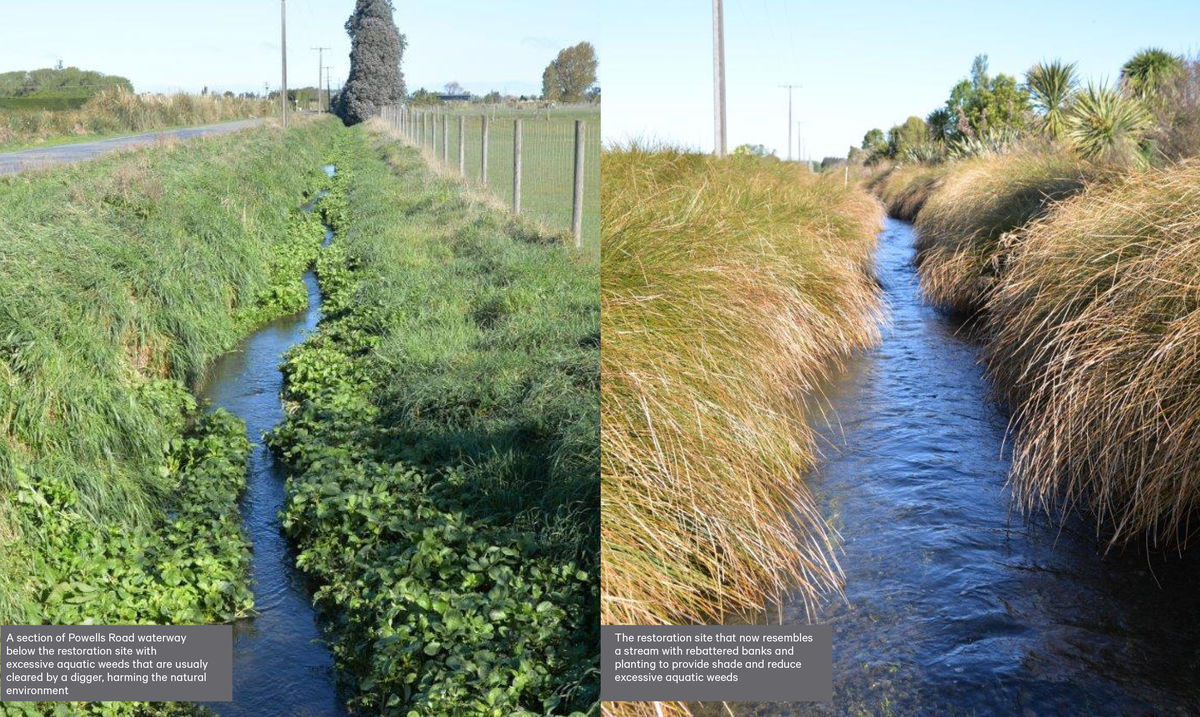
7. Whakamana te Waituna
Who: Ngāi Tahu, Awarua Rūnanga, Southland District Council, Environment Southland, Fonterra and the Department of Conservation.
What: the catchment and lagoon require ongoing active management to improve ecological condition. This is to reduce the risk of the lagoon changing from having clear water and an aquatic environment dominated by aquatic macrophyte plants such as ruppia, to one which has turbid and murky water dominated by algal slime and other suspended phytoplankton.
Why: to improve the health of Waituna lagoon - ensuring the wellbeing of the people, the land, the waters, the ecosystems and the life-force of Waituna.
How the partnership has accelerated change:
- $12m was secured for a five-year project 2018-2023 including $5m from the government’s Freshwater Improvement Fund and $7m funded by the Whakamana Te Waituna Partners.
- The funding is being used to enhance the role of mana whenua to exercise kaitiaki over the lagoon and catchment, to reduce nutrient pollution from the catchment and manage lagoon openings to maximise ecological health rather than simply land drainage.
- A biodiversity/pest control programme for the Lagoon and catchment is ongoing
- Phase one of the Lower Waituna Creek restoration project has been completed, data from annual fish surveys show native fish can thrive in rural waterways when we improve their habitat. Read the story.
- A catchment intervention plan has been developed to reduce contaminants from the catchment entering the lagoon which includes a feasibility study of one or two large scale wetlands to further reduce contaminants as well as the trials of on-farm interventions like Peak Run Off Control Structures.
- Freshwater and biodiversity interventions are part of all Fonterra farmer’s Farm Environment plans in the catchment.
- 566ha of land is gradually being retired from pastoral farming to provide a balance between managing lagoon levels for ecological health and land drainage and assisting in reconnecting tangata whenua with Waituna.
Learn more Whakamana te Waituna website
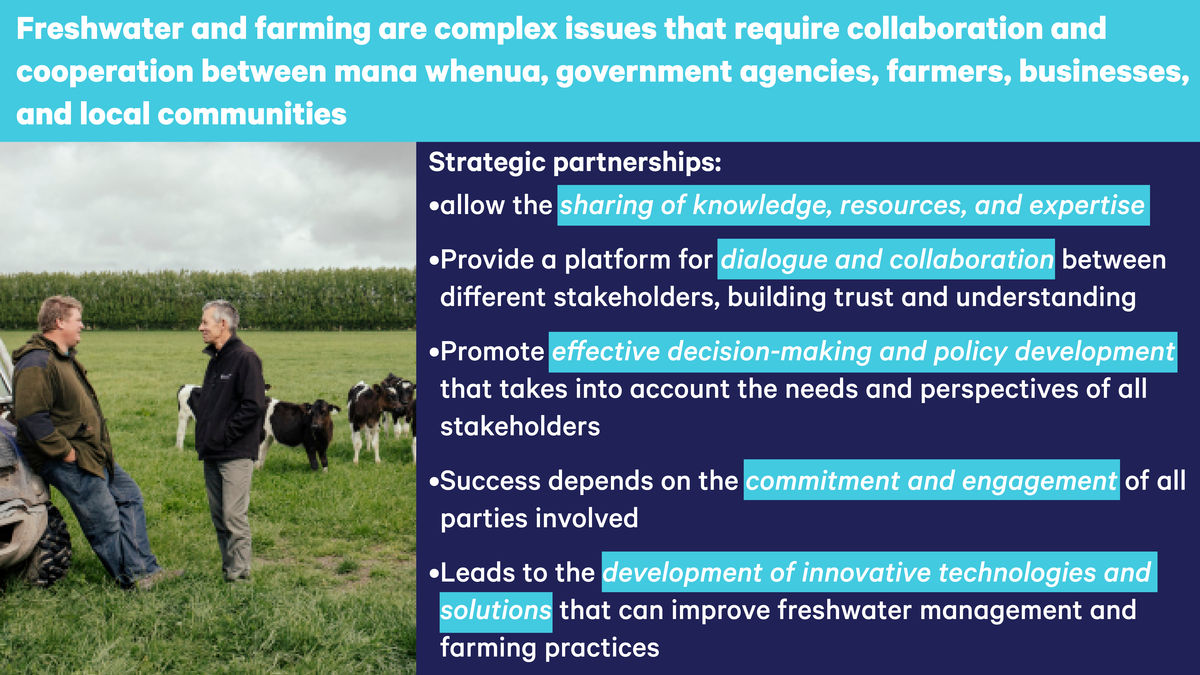
Yes, strategic partnerships make a difference to freshwater and farming
Living Water’s strategic partnerships have made a difference to freshwater and farming. Freshwater and farming are complex issues that require collaboration and cooperation between various stakeholders, including iwi/māori, government agencies, farmers, businesses, and local communities.
- Strategic partnerships can facilitate the sharing of knowledge, resources, and expertise, which can lead to more effective and sustainable practices in catchments.
- Living Water, being a partnership between businesses and a government agency has led to the development of technologies and approaches that can improve freshwater management and farming practices.
- Strategic partnerships can also provide a platform for dialogue and collaboration between different stakeholders, which can help to build trust and understanding. This can lead to more effective decision-making and policy development that takes into account the needs and perspectives of all stakeholders.
- Overall, strategic partnerships have the potential to make a real difference in addressing the challenges of freshwater management and sustainable farming. However, the success of these partnerships will depend on the commitment and engagement of all parties involved.
